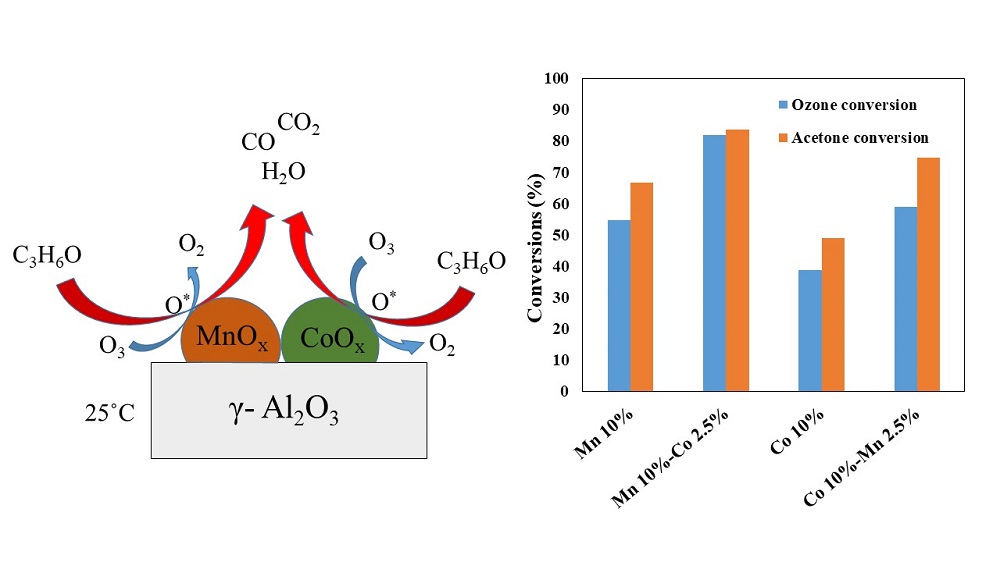The
in-situ DRIFTS spectra of four selected catalysts during the reaction are depicted in Fig. 7. According to Fig. 7(a
-d), acetone is adsorbed on the catalysts. This can be confirmed by the characteristic acetone bands at 1371 and 1424‒1427 cm
-1. The peak at around 1702 cm
−1 (C=O stretching) and the broad band between 2400 and 3750 cm
−1 (OH stretching) were other detected bands. Appearance of the peaks at 1590‒1601 cm
−1 (COO
− stretching of carboxylate species) confirmed adsorption of acetone which is partially oxidized to carboxylate groups [
28,
33,
34]. A recent study has shown that in the presence of ozone, acetone is first oxidized to surface carboxylates; then, the surface carboxylates are further oxidized to alcohols, ketones, carboxylic acids, and eventually to carbon dioxide and carbon monoxide [
28]. In a typical experimental run, after saturation of the catalyst with acetone, ozone was introduced into the system. New peaks appeared and the intensity of the characteristic peaks of acetone declined gradually as they are presented in the representative time spectra. As can be seen in Fig. 7, the main bands are at around 1410‒1427 (C–H asymmetric deformation vibration), 1462‒1468 (methyl and methylene C–H bending), 1580‒1600 (antisymmetric and symmetric COO
− stretching of carboxylates), 1700‒1726 (C═O stretching of ketones and carboxylic acids), and 2700‒3650 cm
−1 (OH stretching of alcohols, carboxylic acids, and water). The intensity of the bands increased over the time of reaction.










